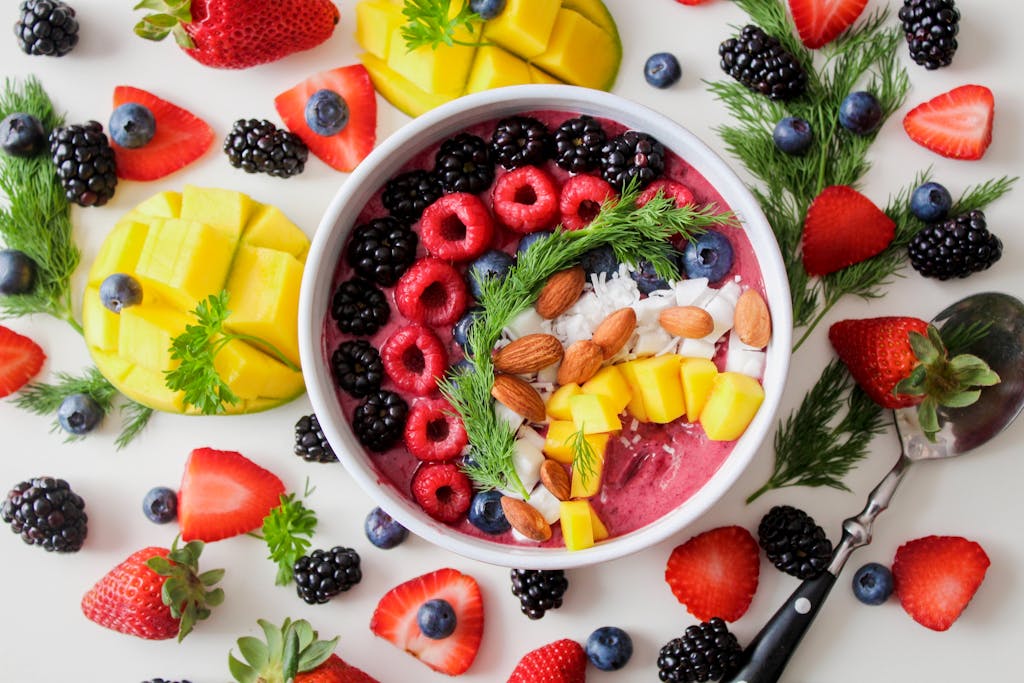High triglyceride levels can lead to an increased risk of heart disease, stroke, and other cardiovascular issues. While factors like genetics and lifestyle contribute to high triglycerides, diet plays a pivotal role in managing and lowering these levels. By incorporating specific heart-healthy foods, you can significantly improve your triglyceride profile and support overall cardiovascular health.
Here are eight top foods that can naturally help lower triglycerides:
1. Fatty Fish (Salmon, Mackerel, Sardines)
Fatty fish such as salmon, mackerel, sardines, and tuna are excellent sources of omega-3 fatty acids, particularly EPA (eicosapentaenoic acid) and DHA (docosahexaenoic acid). These essential fatty acids help decrease inflammation and lower triglyceride levels by reducing the amount of fat produced by the liver. Studies show that consuming fish high in omega-3s can lower triglycerides by as much as 25-30% in individuals with elevated levels.
How to Include Fatty Fish in Your Diet
Grill or bake salmon or mackerel for a heart-healthy dinner. Use canned sardines or tuna in salads or sandwiches for a quick and nutritious meal. Aim for at least two servings of fatty fish per week for maximum benefit.
2. Avocados
Avocados are rich in monounsaturated fats, which are known to improve cholesterol and triglyceride levels. In addition to healthy fats, avocados contain high levels of fiber, which can help lower the absorption of dietary fat into the bloodstream. Studies suggest that adding avocados to your diet can help reduce both LDL cholesterol and triglycerides, while also boosting levels of HDL (the “good” cholesterol).
How to Include Avocados in Your Diet
Mash avocado as a spread on toast, sandwiches, or as a dip for veggies. Add avocado slices to salads, tacos, or smoothies for added creaminess and nutrients. Replace less healthy fats, like butter, with avocado in cooking and baking.
3. Nuts (Almonds, Walnuts, Pistachios)
Nuts like almonds, walnuts, and pistachios are packed with heart-healthy fats, fiber, and plant-based proteins. Their high content of omega-3 fatty acids, particularly in walnuts, can significantly reduce triglyceride levels by improving the overall lipid profile. Additionally, nuts provide phytosterols, which block cholesterol absorption in the digestive tract, further promoting cardiovascular health.
How to Include Nuts in Your Diet
Snack on a handful of almonds or walnuts during the day. Add chopped nuts to oatmeal, yogurt, or salads for a crunchy texture and extra nutrients. Use nut-based flours or butters in recipes as a healthier alternative to refined grains or saturated fats.
4. Oats and Whole Grains
Oats and whole grains such as barley, quinoa, and brown rice are excellent sources of soluble fiber. Soluble fiber forms a gel-like substance in the digestive tract that binds to fats and sugars, reducing their absorption into the bloodstream. Studies show that consuming whole grains can lead to a significant decrease in triglycerides and improve overall heart health. Oats, in particular, contain beta-glucan, a type of soluble fiber that has been specifically linked to lower triglycerides.
How to Include Oats and Whole Grains in Your Diet
Start your day with a bowl of oatmeal topped with fruits and nuts. Choose whole grain bread, pasta, and brown rice over refined grains. Incorporate quinoa or barley into soups, salads, and side dishes.
5. Fortified Soy Products (Tofu, Soy Milk, Edamame)
Soy products, especially those that are fortified with added nutrients, offer a plant-based protein source that can help lower triglyceride levels. Studies have shown that replacing animal protein with soy-based protein can significantly reduce triglycerides, LDL cholesterol, and total cholesterol. Soy is rich in isoflavones, plant compounds that have been shown to lower blood lipid levels and improve heart health.
How to Include Soy Products in Your Diet
Add tofu to stir-fries, salads, or smoothies as a protein-rich, low-fat option. Swap regular milk for soy milk in cereal, coffee, or baking. Snack on steamed edamame (soybeans) for a protein boost that also helps reduce triglycerides.
6. Leafy Green Vegetables (Spinach, Kale, Swiss Chard)
Leafy green vegetables are high in fiber, antioxidants, and essential vitamins and minerals that support heart health. They contain compounds like lutein, beta-carotene, and folate, which reduce inflammation and oxidative stress—both contributors to high triglyceride levels. Leafy greens also help lower cholesterol and improve overall cardiovascular function.
How to Include Leafy Greens in Your Diet
Add spinach or kale to smoothies for a nutrient-dense, low-calorie addition. Use leafy greens as the base for salads, or stir them into soups and casseroles. Sauté Swiss chard or collard greens with olive oil and garlic for a simple, heart-healthy side dish.
7. Berries (Blueberries, Strawberries, Raspberries)
Berries are rich in soluble fiber, antioxidants, and polyphenols, all of which contribute to lowering triglyceride levels. Berries contain anthocyanins, which help protect the arteries and reduce inflammation. The fiber content in berries also helps regulate blood sugar levels, which is key in controlling triglycerides, especially for those with insulin resistance.
How to Include Berries in Your Diet
Add fresh or frozen berries to yogurt, oatmeal, or smoothies. Snack on mixed berries or use them as a natural sweetener in baked goods. Make a berry compote to top pancakes or whole grain waffles for a heart-healthy breakfast.
8. Olive Oil
Olive oil, particularly extra virgin olive oil, is rich in monounsaturated fats and antioxidants like polyphenols, which can reduce triglycerides and LDL cholesterol. Replacing saturated fats (like butter) with olive oil can improve lipid profiles and lower the risk of heart disease. The polyphenols in olive oil also help reduce inflammation and oxidative stress, further benefiting cardiovascular health.
How to Include Olive Oil in Your Diet
Use olive oil as a dressing for salads or as a dip for whole grain bread. Sauté vegetables in olive oil instead of butter or margarine. Drizzle olive oil over roasted vegetables or cooked grains for added flavor and heart health benefits.
Incorporating these eight foods into your daily diet can significantly help in lowering triglyceride levels and promoting heart health. Combining these dietary changes with regular physical activity, maintaining a healthy weight, and avoiding excessive sugar and alcohol consumption will further support your efforts in managing triglycerides. Remember that consistency is key—making small, sustainable adjustments to your eating habits can lead to long-term cardiovascular benefits.
Disclaimer
This article is for informational purposes only and is not intended to replace professional medical or financial advice. Some or all of this article may have been generated using artificial intelligence and may contain inaccuracies. Always consult a healthcare professional for personalized guidance.




